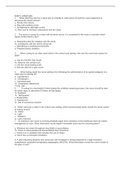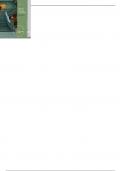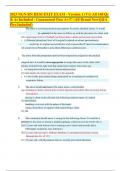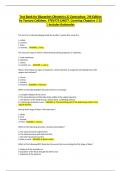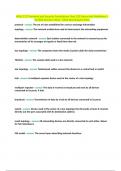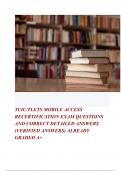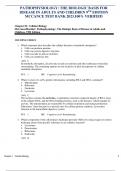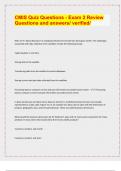Exam (elaborations)
Exam (elaborations) NURSING 324 Exam 1 Critical Care (NURSING324) NURSING 324 Exam 1 Critical Care Questions/Answers Well Solved
- Course
- Institution
Exam 1 critical care 1. When planning care for a client who is critically ill, what action should the nurse implement to decrease the client's stress? a. Strictly limit visitors. b. Play soft soothing music. c. Set lighting for day/night cycles. *d .Plan care to minimize interactions with the clien...
[Show more]
